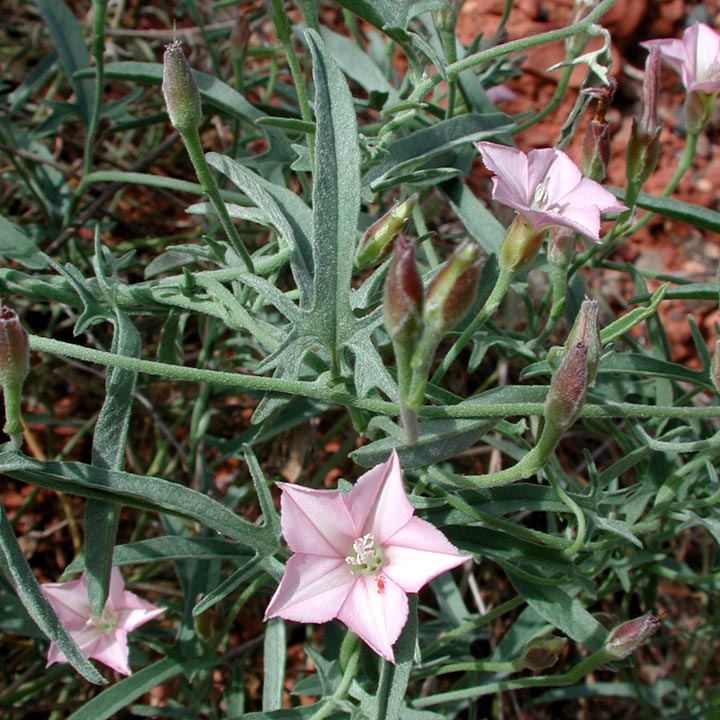|
Family: Convolvulaceae |
PLANTS: Woody or herbaceous vines and shrubs. LEAVES: membranous to coriaceous, linear to ovate or elliptic with truncate, cordate, sagittate or hastate bases, glabrous or pubescent, the margins usually undulate to crenate or irregularly lobed or laciniate, usually petiolate. INFLORESCENCE: of solitary flowers or cymes; peduncles 0.3-10.5 cm long. FLOWERS: pedicels 1-3 cm long; bracts and bracteoles linear, elliptic or ovate; sepals orbicular, elliptic to ovate, pubescent or glabrous, obtuse to acute, usually mucronate, the inner 3 often somewhat longer; corolla white to rose or purple or blue on the limb and white or purplish within the tube, the limb 5-angulate to 5-lobed, the mid-petallne bands glabrous or pubescent; stamens included, unequal, with glandular trichomes on filament bases, the anthers oblong, basally auriculate, introrse; ovary 2-locular, ovoid to subglobose, glabrous or pubescent; style 1 with 2 filiform, papillose stigmas. FRUITS: capsular, 4-valved, mostly brown, chartaceous, ovoid to conical-ovoid, glabrous or pubescent. SEEDS: 1-4, trigonous or rounded, smooth or verrucose, black to dark brown, glabrous. NOTES: Ca. 100 spp., mostly Mediterranean. A few spp. are native in the Americas, particularly in temperate latitudes or elevations. (Latin: convolo = to entwine or to roll together; Convolvulus, a name used by Pliny for bindweed). Sa'ad, F. 1967. Meded. Bot. Mus. Herb. Rijks. Univ. Utrecht 281:1-288. REFERENCES: Austin, Daniel F. 1998. J. Ariz. - Nev. Acad. Sci. Convolvulaceae 30(2): 61. Sep 5, equal or nearly so, appressed; cor funnelform; stamens included, inserted near the base of the cor; pollen prolate to subspheroidal, with 3(4) elongate colpi; ovary 4- ovulate, bilocular or becoming 4-locellar by the development of secondary partitions between the ovules; style 1, slender, elongate; stigmas 2, linear, somewhat flattened, gradually tapering; erect, twining, or trailing perennial herbs with oblong to cordate-ovate or hastate lvs and pink and white fls borne singly or often several together on axillary peduncles; bracts 2, mostly small and well removed from the fl, not concealing the cal. 200+, cosmop., mainly Old World. Gleason, Henry A. & Cronquist, Arthur J. 1991. Manual of vascular plants of northeastern United States and adjacent Canada. lxxv + 910 pp. ©The New York Botanical Garden. All rights reserved. Used by permission. |


